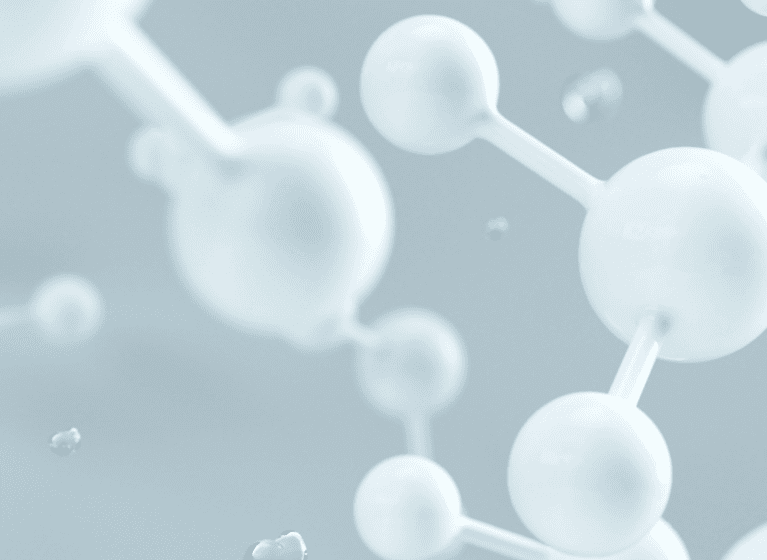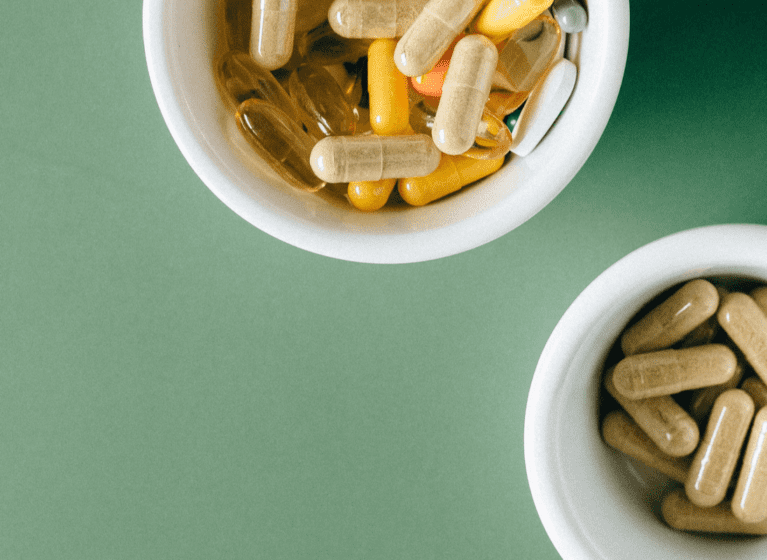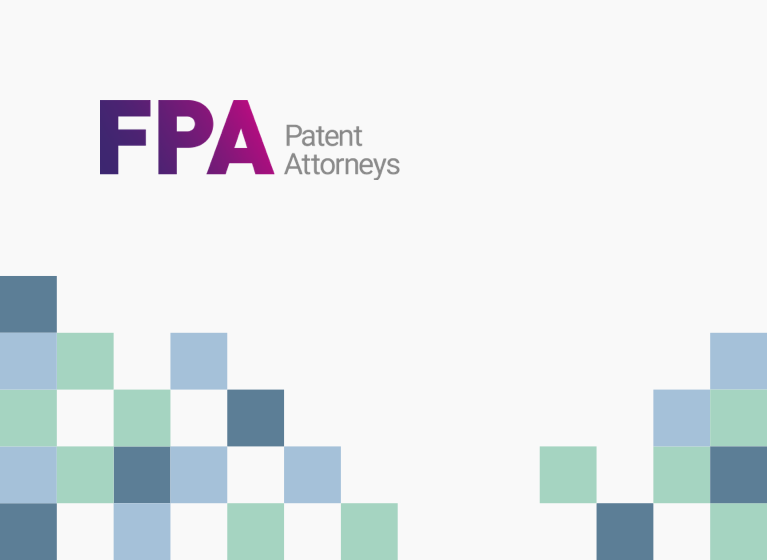In part 2 of our series on patenting AI-designed drugs (read part 1 here), we discuss the ways AI tools may be used to strengthen or inform a patent application, as well as considerations applicants should have in mind when deciding what information to include in a patent application.
How AI-assisted data may strengthen a patent application?
To be eligible for a patent, an invention must satisfy the patentability criteria including:
- Novelty (whether the invention is new) and inventive step (whether the invention would have been obvious) – novelty and inventive step are judged compared to everything made publicly available before the priority date of a patent claim and in light of what other people working within the field (ie the person skilled in the art) would have known (ie the common general knowledge) at the time the application was filed.
- Support and sufficiency. The document of the patent (the description) must sufficiently describe the invention in a way that it can be reproduced by skilled workers within the field. This includes providing sufficient information so that others in the field can repeat the work described. Patent applicants are allowed to claim more broadly than the examples that are included in the specification, but there are limits. The scope must be commensurate with the contribution the invention makes to the field, and cannot not be so broad so as to create an undue burden to others seeking to work the invention. Factors considered to judge claim breadth include plausibility of expected results across the claim’s scope, and whether a general principle of application is at work.
To illustrate the patentability requirements relevant to this article, a helpful example is that typically a patent application for a new drug would need to include the structure of the drug, details of its synthesis and experimental data showing its efficacy (eg for validated targets this could be in vitro assay data, or for less validated targets/diseases in vivo efficacy studies may be needed).
Here, we discuss some of the ways that AI tools may be able to assist with strengthening a patent application for a new drug.
Novelty and inventive step
Generative AI tools may be able to generate new molecular structures, potentially providing drug hunters access to new chemical space that has a higher chance of impacting the target. This of course will need to be tempered with synthetic accessibility, stability and other tangible factors, but insufficient chemical diversity has been a common criticism of traditional medicinal chemistry.
In addition to generating structures, AI-assisted searching of known molecules in the prior art may be able to provide more confidence that the molecule is novel, or identify relevant prior art that can be considered when drafting the patent application. Identification of relevant prior art is also useful for evaluating if the patent application has an inventive step over the prior art.
AI tools that generate in silico efficacy or pharmacokinetic data may be useful to establish a surprising technical effect for a compound series. For example, information on the mechanism of action, strength and specificity of binding can contribute to the inventive aspects of a molecule, or class of molecules. AI tools may also be helpful to rapidly and more cost effectively generate comparative data showing a difference in predicted properties for a claimed compound series compared with compounds already known (eg gold standards, or competitor compounds). The better validated the AI model is, the stronger the arguments based on these data will be.
While for some new drugs, showing activity for a molecular target can be enough on its own to establish inventive step, for other drug series, that may be structurally similar to known drugs, an AI tool may be used to show an unexpected difference in terms of technical effect / drug activity that could help establish the inventiveness of the new series. We caution that in silico predictions alone are currently unlikely to establish an inventive step, but may be very useful in guiding which experiments could be most effective to demonstrate the desired effects of the new drugs. Similarly, if a compound series were to behave favourably but contradictory to a well-validated AI tool’s predictions, this may also help demonstrate an inventive step for the series.
In some cases, patent applicants may wish to take a hybrid approach, so they can show a desirable property for some compounds in a series experimentally, and then show that the same property is predicted for other members across the scope of what is claimed by an AI tool. This approach is essentially internal validation of the AI tool. This type of inventive step consideration closely mirrors the support and enablement requirement.
Support/sufficiency
Once novelty and inventive step are established, support and sufficiency are often the defining grounds governing the breadth of protection awarded for inventions in the pharmaceutical space, especially where a broad scope is pursued with limited experimental examples.
Inventions in “unpredictable” fields, such as chemistry and biotechnology, are often faced with the challenge of establishing the patent requirements of support and enablement. Although the tests for support and enablement vary at different patent offices across the world, the general consideration is that the person skilled in the art should have a reasonable expectation that the invention will successfully work (ie plausibility), and should be able to perform the invention without needing to perform excessive further experiments (ie undue burden).
In the chemical and biotech areas, it is common for patent applicants to pursue claims to a broad class (or ‘genus’) of therapeutic molecules that share common physical feature(s). It is however difficult, if not impossible to experimentally demonstrate the activity of all, or as many as possible, molecules falling within the scope of the claims. In many cases only a selection of the ‘genus’ molecules are experimentally demonstrated in the examples described in the patent application.
Because of this, patent applications with only a few experimental examples may be forced to substantially narrow claims during patent examination, due to examiners considering the specification to insufficiently support the broad scope of the ‘genus’ claim. On the other hand, in cases where broader genus or Markush claims are allowed, questions can arise regarding the enforceability of all embodiments falling within the claims1,2.
Generative AI tools could generate further examples of therapeutic molecules falling within the scope of a genus claim, and provide predictive data to help demonstrate that it is reasonably plausible that all compounds within a claim’s scope will share the same physical property, eg activity at the target, and/or improved PK.
For example, by having an accurate in silico prediction of a drug’s target protein structure, it might be possible for patent applicants to rely more on mechanistic or pharmacokinetic arguments to establish support. For example, patentees may be able to more readily argue that a class of molecule would be reasonably expected to bind to said protein, due to the skilled person’s understanding of molecules expected to correctly interact with the AI-predicted binding site3.
Historically, in silico data has not been widely accepted by patent offices4, with modelling tools criticised as failing to meet the required standards for support and enablement, especially given the assumed unpredictability of the chemical and biological arts. The reluctance of patent offices to engage with and accept in silico data largely stems from an interpretation that in silico predictions lack translation to real world results. Plausible extrapolation from in silico predictions to real world results is important to establish a reasonable expectation of success without undue experimental burden to check which in silico predictions actually produce results.
The Australian patent examiner’s manual5 describes that support may include “in silico modelling that credibly and plausibly demonstrates that the specified drugs possess an activity that could lead to the treatment of the identified condition.” The challenge for AI tools in this space is therefore whether they can improve to the point of being accepted as ‘credible and plausible’.
Discussion and predictions for the future
Advances in AI mean that modelling tools are improving in terms of their accuracy and reliability. Accordingly, we expect that as AI tools becomes a better predictor, it will become more useful (and commonplace) in patent applications. We also expect that as AI tools continue to improve patent offices will become more willing to accept in silico data as supporting the invention6. In silico data, either alone or in combination with in vitro and in vivo data, could conceivably improve in quality to the extent that support and enablement requirements are more easily met, and are less of a barrier for patentability of broad genus claims.
While we consider AI tools are likely to be helpful in providing in silico support for patent applications, we caution that questions remain regarding use of generative AI for developing and patenting inventions. We do caution that even if patent offices become increasingly accepting of in silico data, it is likely to be a while before we receive guidance from the courts on whether in silico data alone, or in combination with minimal experimental data, is sufficient to meet patentability standards. We also expect that due to the rapid development in AI in this space, that there will be a shifting standard as to how reliable in silico data will be treating in the field, and thus also how it will be treating as supporting patent claim scope.
Despite our optimistic outlook, the likelihood that AI-derived data may strengthen a patent application will in many ways depend on the specifics of the research program. Further, since patent protection for drug molecules remains critically important to successful commercialisation, we recommend that you consult a patent attorney to explore the benefits of additional AI-derived data may have on a patent application. This area of patent law continues to develop, and with this in mind we will discuss some of the potential risks of relying on AI-generated data in a patent application in Part 3 of our article series, “Navigating potential patenting obstacles: How may AI-assisted data hurt patenting prospects?” And, if you have any questions, please reach out to the team at FPA Patent Attorneys to help with any questions regarding the patentability of drugs discovered with the assistance of AI tools.
1 The Death of the Genus Claim (harvard.edu)
2 Amgen v Sanofi case at the U.S. Supreme Court
3 An AI tool for predicting protein shapes could be transformative for medicine, but it challenges science’s need for proof (theconversation.com)
4 https://www.future-science.com/doi/pdf/10.4155/fmc.11.70
5 https://manuals.ipaustralia.gov.au/patent/5.6.7.3-support-for-the-claims
6 The impact of AI-generated in silico data on pharma patent applications (gje.com)





